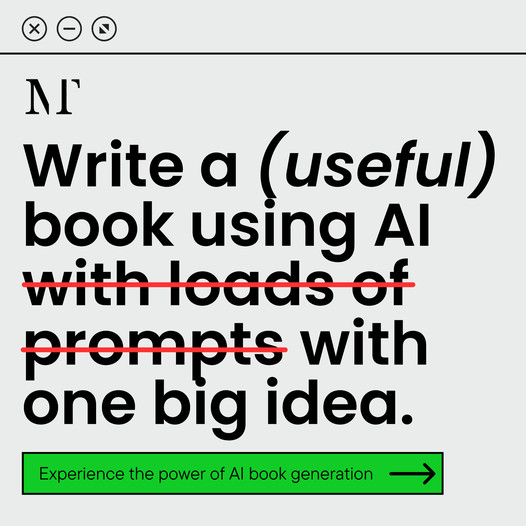Understanding the Importance of a Book Proposal
Think of a book proposal like your book’s big pitch to the publishing world. It’s a handy dandy tool that packs your genius idea into a neat package, making it a must-have for any writer trying to break into publishing.
What is a Book Proposal?
In a nutshell, a book proposal is your book’s personal advertisement to publishers and literary agents. It offers a taste of what your book is all about, who it’s for, and why they should care. Plus, it highlights why you, out of everyone, can make it happen. Essentially, it’s the elevator pitch that opens doors to publication.
Here’s what you’ll typically find in a book proposal:
| Section | Description |
|---|---|
| Title and Overview | Catchy title and a quick peek into what your book’s about. |
| Manuscript Summary | A sneak preview of the book’s storyline and structure. |
| Author Bio | The lowdown on you and your writing chops. |
| Marketing Plan | The game plan for getting your masterpiece into the hands of readers. |
Every part plays a part in making your pitch irresistible to editors and agents.
Why a Book Proposal is Essential for Authors
Crafting a solid book proposal is a smart move for several reasons:
-
Shows off Market Demand: Demonstrating there’s buzz for your book’s topic is gold. Comparing it to existing titles and pinpointing potential fans lets publishers see that there’s an audience out there craving your genius.
-
Spotlights Your Style: This is your time to shine! Let your writing voice and viewpoint steal the show. It helps publishers get a feel for what sets you apart from the sea of other scribes.
-
Saves Time and Energy: No need to hand over your entire manuscript just yet. A shiny proposal gives a snapshot of your work’s promise. If they’re hooked, they’ll ask for the full monty later on.
-
Sharpens Your Focus: Putting together a proposal forces you to nail down exactly what your book’s about and what you want to say. This clarity is super helpful when you dive into writing your manuscript.
For a brush-up on making your writing pop, check out our piece on how to improve writing skills. So go on, create that killer proposal and get ready to snag that publishing deal you’ve been dreaming about.
Crafting a Winning Book Proposal
Getting a book published often hinges on how convincing your proposal is. Nailing the key parts and writing with flair can make all the difference.
Parts of a Book Proposal
A strong book proposal is like a jigsaw puzzle, where each piece needs to fit snugly. Here’s what to cover:
| Component | Description |
|---|---|
| Title and Overview | A catchy title and a snapshot of what your book’s about. |
| Manuscript Summary | What’s your book saying? Dive into its themes and layout. |
| Author Bio | Your story and creds: why are you the real deal? |
| Marketing Plan | How are you gonna sell it? Who’s gonna buy it? |
| Competitive Analysis | What other books are like yours, and how does yours stand out? |
| Sample Chapters | Give them a taste of your style and voice. |
Nail these parts, and you’ll have those publishers or agents hooked.
Tips to Jazz Up Your Book Proposal
Making your proposal shine isn’t just about info; it’s all in the spin. Here’s how to jazz it up:
 What Poetry Feels Like
What Poetry Feels Like- Keep It Simple: Avoid fancy talk. Focus on clear, direct words anyone can get.
- Make It Personal: Each pitch should fit the publisher or agent like a glove. Know what they like and have done before.
- Stand Out: What makes your book the one? Highlight your killer angle, expertise, or what makes your voice pop.
- Look the Part: Presentation is king. Use neat headings and keep it tidy. Show you mean business.
- Back It Up: Lay down stats and figures in your marketing plan. This adds a splash of realism.
- Polish Your Pitch: Give it a solid proofread. Ask pals for a once-over to catch slips. For editing hacks, check out our piece on how to edit your own writing.
- Play the Waiting Game: Replies might take a while. Follow up politely if there’s radio silence.
A neat, slick book proposal puts you on the radar of agents and publishers. For a boost in writing skills, hop over to our how to improve writing skills guide.
Researching Publishers and Agents
Hunting for the right publisher or literary wizard to champion your book is quite the adventure. This part’s all about sniffing out those publishers and how to buddy up with literary agents.
Identifying Potential Publishers
When you’re on the prowl for publishers, you gotta zero in on the ones that get your book’s vibe. Stick to those who know the ropes of your book’s genre, and you’ll be one step closer to that golden “Yes!”. Here’s the scoop on some genres and the publishers likely to show you some love:
| Genre | Types of Publishers |
|---|---|
| Fiction | Big-Time Publishers, Indie Gems |
| Non-Fiction | Campus Churners, Niche Nerds |
| Children’s Books | Indie Stars, Big-Banner Names |
| Academic | Scholarly Houses |
| Genre Fiction (Mystery, Fantasy, etc.) | Cool Genre Buffs |
How to unearth these publisher folks? Try this:
- Online Sleuthing: Peek at directories like the Association of Authors’ Reps (AAR) or similar places.
- Shelf Surfing: Eye your competition — peek at publishers of books vibin’ like yours.
- Guideline Scanning: Snoop around their websites for how they want your stuff sent.
Approaching Literary Agents
Once you’ve rounded up your list of potential publishers, it’s time to get cozy with some agents. These folks can light the way through the book-selling maze and sharpen your pitch game. Here’s how to win ’em over:
- Do Your Homework: Scope out agents who dig your genre. Check their online profiles through agency sites or databases like QueryTracker.
- Craft a Sizzlin’ Query Letter: Your pitch should give a quick rundown of your book, a little bit about you, and why you’ve chosen them as your book’s sidekick. Check this out for help: nailing a query letter.
- Make it Personal: Tweak each query letter like you’ve made it just for them. Drop in why you’re keen on them based on their tastes and past hits.
- Mind the Submission Rules: Stick to each agent’s rules like glue, from how they want it to what they wanna see.
Get cracking by spotting those perfect publishers and wooing those literary agents. It’ll plant you firmly on the path to getting folks buzzed about your book. For more on polishing your writing game, dive into boosting writing chops and novel-writing tips.
Structuring Your Book Proposal
Cooking up a snazzy book proposal is like making the perfect grilled cheese—it’s gotta be just right to hook those publishers and agents. Every slice (or section) needs to show off your book’s yummy potential while letting your own spicy author flavor shine through.
Title and Overview
The title is your book’s opening act. Make it catchy, something that not only tells what your book’s about but also has people humming it afterward. Then, serve a short and sweet overview. This is where you lay down the basics: what your book’s cooking, its flavors (genre), and who should be digging it. Keep it tight—aim for around 1-2 paragraphs.
| Component | Recommendation |
|---|---|
| Title | Catchy & Straightforward |
| Overview | 1-2 Paragraphs on premise, genre, audience |
Manuscript Summary
The manuscript summary gives your book the spotlight. This is a little longer, like the feature act: 1-3 pages should do you. Outline those big themes, the juicy plot crunches, and the character rollercoasters, but don’t spill too much of the stew. Focus on what makes your plot special and why folks will be chatting about it over their morning coffee.
| Element | Recommendation |
|---|---|
| Length | 1-3 Pages |
| Focus | Big themes, tasty plot bits, a character journey |
Author Bio and Marketing Plan
The author bio? That’s your chance to strut your stuff. Share your street cred—what makes you the perfect cook for this book’s recipe. Then, show off your marketing savvy. Explain how you plan to knock on the right doors and shake hands (in spirit) with potential readers. Talk shop about who you’re writing for, the big book signings you’re plotting, your Insta flair, and if you’ve already carved a niche in this writin’ world.
| Component | Description |
|---|---|
| Author Bio | Your expertise & writing chops |
| Marketing Plan | Who you’re writing for & your promotion playbook |
Nailing these bits in your proposal shows publishers you’re in it to win it—both passionate and polished. Swing by our article on how to improve writing skills if you want more juicy tidbits on honing your craft.
Polishing Your Book Proposal
So, you’ve got your book proposal draft ready. Before you send it off to those big-time publishers and agents, let’s make sure it shines. Here’s all you need to know about tweaking, proofreading, and gathering feedback for it.
Editing and Proofreading Your Proposal
First things first: give that proposal a good edit for clarity and logic. You want your ideas to sing without unnecessary teacher-talk. Here’s a handy checklist for hitting all the right notes:
| Checklist for Editing | ✔️ |
|---|---|
| Clear main idea | |
| Kick-off and wrap-up pack a punch | |
| Everything fits and flows | |
| Stays in the same tone | |
| Spelling, commas, and grammar are on point |
Then, move on to the essential proofreading. You want to spot any sneaky typos or formatting slip-ups that could make you look sloppy. Try these insider tips:
- Listen to your words: Reading it out loud helps catch clunky parts or those “oops, what did I just say?” moments.
- Tool time: Grammar and spell checkers are your pals, but don’t trust them blindly.
- Hit refresh: Put it aside for a bit—a fresh pair of eyes after a break can work wonders.
Need more tricks to up your editing game? Check out our guide on how to edit your own writing.
Seeking Feedback
Getting a second opinion (or third, or fourth) is gold for fine-tuning your proposal. Here’s where to find those valuable insights:
- Beta buddies: Hand your proposal to friends or other writers who’ll give you the lowdown.
- Writing crews: Join a group where folks swap proposals and give each other honest critiques. Plus, it’s great to pump up your writing mojo. Our piece on writing exercises to improve creativity is loaded with teamwork ideas.
- Online hangouts: Find writer communities online where members share and get feedback. It’s a window into what’s expected in the biz.
While gathering feedback, soak it all in—compliments, criticism, the whole shebang. Use it to guide your revisions, but don’t forget—stay true to what you want your book to be.
In the next step, learn about sending off your proposal, making sure it ticks all the boxes and lands in the hands of those who need to see it.
Submitting Your Book Proposal
Getting your book deal rolling starts right here, with submitting your book proposal. Nailing this step really gives you a leg up.
Guidelines for Submission
Ready to hit send on that proposal? Hold up—make sure you tick off the right boxes that publishers and agents are looking for. Here’s the rundown:
| What to Include | What’s Expected |
|---|---|
| Format | Stick with the basics—plain fonts like Times New Roman, size 12, with 1-inch borders. |
| Length | Keep it snug and tidy, somewhere between 20-50 pages (depends on who’s asking). |
| Cover Letter | Knock out a short note that sums up your book and why you’re the bee’s knees to write it. |
| Synopsis | Wrap your story neat in 1-2 pages. |
| Sample Chapters | Toss in 1-3 chapters to let your style shine through. |
| Author Bio | Give a quick spiel about your creds and past writing gigs. |
| Marketing Plan | Sketch out your genius plan to get folks hyped about your book and who you’re aiming at. |
Each submission should feel like it was made just for that publisher or agent. Dive into their preferences and tweak your proposal accordingly. Want some extra juice for your writing skills? Check out our piece on boosting your writing chops.
Follow-Up Strategies
So, after your proposal is off your hands, what’s next? Timing’s crucial, so here’s your game plan:
| Check-In Method | When to Do It | What to Do |
|---|---|---|
| Confirmation Email | One week after submission | Shoot a friendly email just to confirm they’ve got your proposal—no sweat here. |
| Follow-Up Email | 4–6 weeks later | If radio silence ensues, send a cool, quick nudge to see where things stand. |
| Patience | 6–12 weeks in | Still nothing? Relax, this is usual stuff for publishers and agents. |
Keep it cool and professional—no one wants to feel like you’re hovering. Meanwhile, keep chiseling away at your writing. If the silence is deafening, our article on handling letdowns as a writer might give you the boost you need to soldier on in this cutthroat game.

 Grab my poetry book, 'we're all just wanderers in the end' Here
Grab my poetry book, 'we're all just wanderers in the end' Here AD: Your Book Finally Written...
AD: Your Book Finally Written...